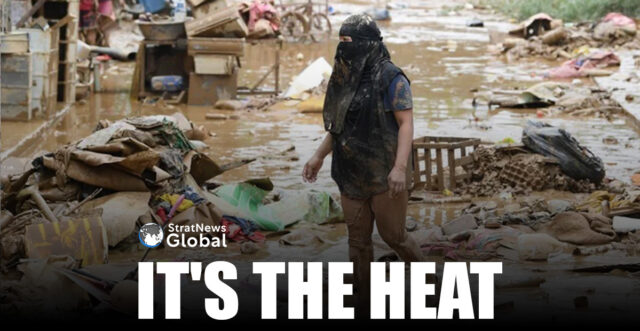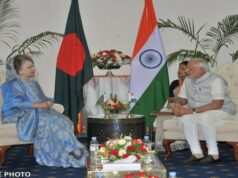Global Warming is making the Philippines more vulnerable to tropical storms, with rising temperatures already putting the country at nearly double the risk of deadly typhoons, scientists said in a report published on Thursday.
The unprecedented formation of four typhoons around the Philippines last month was made 70% more likely as a result of global temperature rises of 1.3 degrees Celsius (2.3 degrees Fahrenheit), researchers with the World Weather Attribution group said in a report published on Thursday.
Though scientists are cautious when it comes to attributing individual weather events to climate change, the consensus is that warmer oceans are intensifying rainfall and wind speeds across the globe.
“Climate change made the conditions that formed and fueled the typhoons nearly twice as likely,” the group said.
Hundreds of thousands of people were evacuated and more than 170 people killed during an unprecedented sequence of six tropical cyclones that landed in the country in October and November, raising concerns that storm activity was being turbocharged by higher sea surface temperatures.
“The storms were more likely to develop more strongly and reach the Philippines at a higher intensity than they otherwise would have,” said Ben Clarke, a weather researcher at Imperial College London, one of the report’s authors.
If temperatures rise to 2.6 Celsius above pre-industrial levels, those same storm conditions would be 40% more likely compared to now, he added.
An analysis published last month by U.S. weather researchers Climate Central said that hurricanes had intensified significantly as a result of record-breaking ocean warming, with wind speeds up by 29 kmph.
Scientists believe warmer ocean temperatures are intensifying tropical storms by increasing the rate of evaporation. The Intergovernmental Panel on Climate Change said in its latest assessment that there was “high confidence” that
global warming would make storms more intense.
It is still unclear whether or not rising temperatures would extend the normal typhoon season or make tropical storms more frequent, but climate activists are concerned.
“We used to have what we called a hazard calendar – now it is just basically the whole year around,” said Afrhill Rances, the Philippines’ representative with the International Federation of Red Cross and Red Crescent Societies.
(With Inputs from Reuters)
In a career spanning three decades and counting, Ramananda (Ram to his friends) has been the foreign editor of The Telegraph, Outlook Magazine and the New Indian Express. He helped set up rediff.com’s editorial operations in San Jose and New York, helmed sify.com, and was the founder editor of India.com.
His work has featured in national and international publications like the Al Jazeera Centre for Studies, Global Times and Ashahi Shimbun. But his one constant over all these years, he says, has been the attempt to understand rising India’s place in the world.
He can rustle up a mean salad, his oil-less pepper chicken is to die for, and all it takes is some beer and rhythm and blues to rock his soul.
Talk to him about foreign and strategic affairs, media, South Asia, China, and of course India.





